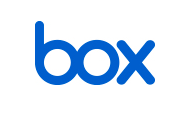The digital workplace is all about collaboration, among workers in the same location or anywhere in the world. Businesses need to evolve their operations and speed processes while remaining secure. At the same time, IT is mired in support for legacy systems, under pressure to reduce costs, and so tied up in ongoing maintenance that they have no time for innovation.
That leaves collaboration stuck in a legacy siloed approach with fragmented systems holding organizations back, says Rand Wacker, VP, product marketing at Box.
Files shares, email, and physical media shouldn’t have to exist alongside enterprise content management systems like Microsoft SharePoint, enterprise file sync and share products like Dropbox, Google Drive and Microsoft OneDrive, and line of business products like Salesforce, he says. A single platform for all content can eliminate the challenges of fragmented work, disconnected processes, and insecure data that occur when there’s no one place to go to find things.
Unlike OneDrive which is used for individual files, and SharePoint that needs IT’s intervention to generate shares, Box’s cloud content management, extends collaboration across enterprise boundaries. Secure and compliant across industries and geographies, Wacker says it is allows companies to adhere to regulations while continuing to allow people to work together.
“You should be able to put all kinds of content in the same place and secure it easily,” he says. “It removes the cognitive confusion of deciding where to store things based on content type.”
Box is integrated with over 1400 applications, thanks to the company’s huge ecosystem of partners. And to ensure the data from those apps is secured, Box offers security features such as DLP, encryption key management, support for policies, data governance, and analytics.
“There’s nothing more powerful than having a security product that protects your data without creating any roadblocks for users to access the information they need” Wacker notes.
Companies wanting to integrate their own programs can make use of the Box APIs; many already build applications such as custom portals, apps for mobile field operations, and for content management.
One core use case for Box is in the digital workplace, and Wacker says 99 percent of customers are using Box and Microsoft Office 365 together to power their digital workplaces. It’s the new best-of-breed stack, he says, when integrated across the entire Microsoft portfolio: Office, Office Online, Teams, Outlook, SharePoint, Windows 10, InTune, Azure, and more, as well as connecting to Android, iOS, and the Mac.
Wacker says users can stash all of their data, even that with residency requirements, with Box and its storage partners (including Microsoft, Google, IBM, and AWS) via Box Zones, while managing and securing it through the Box console. Box offers unlimited storage for customers with an enterprise contract, offering cost savings over local or other cloud storage.
And, it offers a seamless way to find content from within an application, without having to investigate file shares, SharePoint sites, and other locations one at a time. When files are stored in Box, the familiar application interface surfaces all available content, letting users open, share, or save their files as usual within an application while protecting them in the cloud.
Box may have invented the file sync and share category but Wacker insists proudly it is by no means a storage company. “We are a cloud content management platform.”
For more details and case studies of implementations, check out Box’s ebook.

